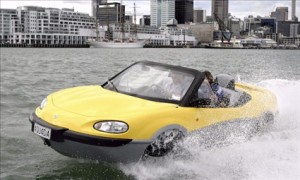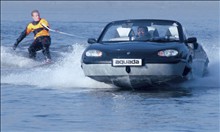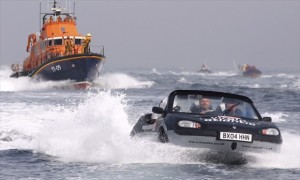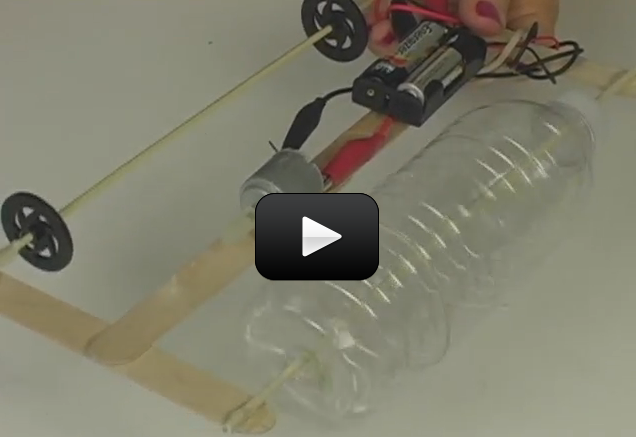 The image here is the 2003 Gibbs Aqauda at full speed in deep water! It looks like it’s just skipping along the surface, doesn’t it?
The image here is the 2003 Gibbs Aqauda at full speed in deep water! It looks like it’s just skipping along the surface, doesn’t it?
The Gibbs company uses auto, marine, and propulsion technologies to build water-land vehicles used mostly by the military. But wouldn’t it save time to cut through the traffic on the bridge if you could skim through the water?
One of the main issues with amphibious vehicles is that they are painfully slow – both in the water and on land. (Although the 2003 Aquada gets up to 30 mph in water.)
The other issue is safety – the lift from the bow on a boat is needed to avoid plunging, but on a car you don’t want the front end to lift at high speeds. Also a boat distributes the load evenly across the hull while a car has concentrated loads where the suspension is attached to the frame.
 The Aquada car uses a 160 hp engine for land and a compact jet that produces 2,000 pounds of thrust. It broke the record for crossing the English Channel by four whole hours (third image below with the orange boat in the background).
The Aquada car uses a 160 hp engine for land and a compact jet that produces 2,000 pounds of thrust. It broke the record for crossing the English Channel by four whole hours (third image below with the orange boat in the background).
And if the car goes fast enough, you can pull a waterskier.
The Gibbs company has also invented the Humdinga, which is for military use, as it has four-wheel drive at can cruise at 40 mph on water, as well as the Quadski, which travels at 50 mph on land or sea.
 We’re going to build our own model, though not with a jet engine. We’re going to use a motor, wheels, floats, and wires to build a real working model you can use in the tub tonight. Our model is also going to have a transmission that will enable you to get two different speeds using very simple materials. Are you ready? Here’s what you need to do:
We’re going to build our own model, though not with a jet engine. We’re going to use a motor, wheels, floats, and wires to build a real working model you can use in the tub tonight. Our model is also going to have a transmission that will enable you to get two different speeds using very simple materials. Are you ready? Here’s what you need to do:
Please login or register to read the rest of this content.


thx aurora
Sure, you can use craft size sticks, but they won’t be as strong.
i saw you using tongue depressor size popsicle sticks. can i use craft size?
Hmm… I built mine slightly different and I’m having some major issues. I guess I will have to restart.
BTW I love the comments.
You can stick your batteries in a ziploc baggie if they are getting wet and seal it up with tape where the wires are sticking out, since it’s usually not a good idea to have batteries in high-moisture environments. 🙂
Thanks, Aurora! I’ll try that. By the way, my robot sprays a lot of water when it swims. Should I worry about the motor or batteries getting wet?
The shaft is smooth and slick, so you’ll want to use epoxy (the 5 minute kind works well). Get an adult to help you mix it up right so you don’t cement your fingers together. 🙂
I made this and it was great! When I first tried it it was so much faster than I’d expected that it crashed and I had to re-hot glue some things! Instead of using wheels and 2 other water bottles, I just rigged up a bottle in the back like the one in the front except without the motor, and it worked fine. My only problem is that I can’t get the glue stick to stay on the motor. I’ve tried gluing a large bead on, but hot glue doesn’t stick to the shaft. Any suggestions?
So glad you are enjoying the program! You might want to try a ‘stickier’ rubber band – one of those all-rubber ones. I had this problem also when the motor was too far back so that the rubber band didn’t quite line up with the lower setting. I had to rip off the motor and move it into better position. Keep at it and send me a photo!
Hi, Aurora,
We tried amphibious robot vehicle with transmission. It
ran pretty fast, I think it’s even faster than race cars. Our kids
loved this one the best. But it’s hard to change speed.
The rubber band kept slipping off to the neck.
Thanks to give us a lot of summer fun.
Jessie